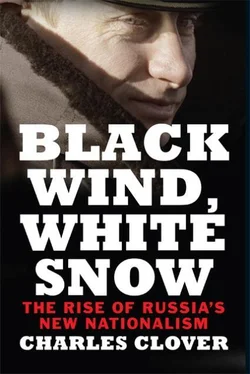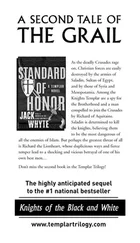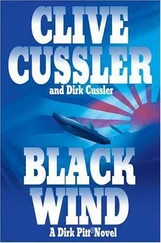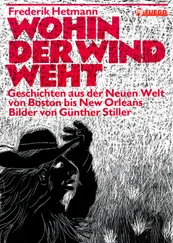The melding of the Bolshevik revolution with religious themes is something that was common to many intellectuals of the time. Many of them seemed to suffer from a version of Stockholm syndrome: identifying with the goals of the Bolshevik revolution, while being its awestruck victims. The greatest poem of the era, ‘The Twelve’, written in 1918 by Alexander Blok, reflects this urge to suffuse communism with Christianity. In the poem, 12 Red Guards patrolling Petrograd through the ‘Black night, white snow’ see a ghostly figure ahead of them:
soft-footed where the blizzard swirls,
invulnerable where bullets crossed –
crowned with a crown of
snowflake pearls,
a flowery diadem of frost,
ahead of them goes Jesus Christ.
The Eurasianists’ ideas were not serious scientific theories but rather (like the poem) an analogy – an aesthetic attempt to reconcile Red Russia and White Russia. They saw in communism a transient version of Christianity which, when united with the Orthodox faith, leading the Red Guards through the snow, would be fit to govern a vast empire.
Top-heavy with cerebral energy, the group pronounced the discovery of an ancient continental Atlantis, submerged in the collective unconscious of the population of Inner Asia, a unique Eurasian civilization destined to be unitary, which has emerged in various incarnations as the Scythians, Huns, Turks and Mongols. The Russian Empire and its successor, the Soviet Union, had become the most recent expression of this timeless unity, the new organic host of the inner continent’s steppeland and forests.
The theory they authored saw Russia as a natural ‘ideocracy’, destined to be governed by a party very much like the communist one – once communism collapsed under the weight of its own contradictions. The boundaries of the Russian Empire and the Soviet Union were the natural demarcations of a political unit destined to be whole. As Nikolay Trubetskoy, the movement’s main intellectual, wrote in 1925: ‘By its very nature, Eurasia is historically destined to be a single state entity.’ 9
Eurasianism was but a sideline to the group’s serious academic work – the place where they ‘poured’ their dark side, a repository for their bitterness. It was more therapy than serious scholarship, and Trubetskoy was to come to regard his own political works not only as fakery, but as quite harmful fakery; he viewed Stalin’s rule as the epitome of the political manifestos the group had been writing for a decade: ‘our predictions, hitting the mark, turn out to be nightmares’, he told a friend, eventually renouncing his own views.
* * *
Gumilev, whom we met at the beginning of the introduction, is the writer most often identified with the emergence of Eurasianism. He was a successor to the first wave, to which he looked for inspiration. He wrote 14 histories of Russia and the steppe nomads which accentuated the interrelations between the two groups and de-emphasized Russia’s links to European culture. Indeed, the Mongols were presented in a positive light as frequent Russian allies, while the West European nationalities were portrayed as devious and wicked despoilers of Russia.
Gumilev himself was frank with his colleagues about the shortcomings of his history – much of which was written while he was in prison and had no access to books or sources. ‘Thus I was forced to rely on my imagination and come to my own conclusions using, shall we say, my own logic’, he told his fellow Eurasianist Petr Savitsky in a letter. 10In his books, the steppe tribes appear more as historical allegory than as serious scholarship. The Xiongnu, the Huns, the Turks, the Mongols – all subjects of Gumilev’s early histories – are isolated, perpetually maligned, backward societies historically prone to tragic, dramatic cycles of glory and ruin. In this, it appears, they serve mainly as metaphors for Gumilev’s native Russia.
The son of two of the most famous poets of the twentieth century, Anna Akhmatova and Nikolay Gumilev, Lev was one of the most famous public intellectuals in the USSR during the perestroika era. Having created a theory of passionarnost , his own life became a case study. His theories were readily received in a country that was suspicious of any orthodoxy and that saw his suffering as a sign of authenticity. His celebrity status launched Eurasianism into Russia’s post-Soviet mainstream culture, with the idea that Russia is not a nation but a civilization that has inherited the mantle of the Russian Empire and the Soviet Union, both of which were just transient permutations of some mystical unity that has possessed the inner continent since deep antiquity. As the Soviet hammer and sickle was lowered from the Kremlin mast for the last time in 1991, his theories were co-opted by elements of the old regime looking for a synthesis of internationalism with nationalism that would allow them to continue to rule as before, as the embodiment of the Eurasian empire he loved so neurotically towards the end of his life.
The old-style hardliners were swept away in the failed coup of August 1991. With them went any chance of ‘Red Nationalism’ directly succeeding communism. Instead, it was kept alive in basements and on cranky pamphlets by the efforts of a third man, Alexander Dugin, a former dissident, pamphleteer, hipster and guitar-playing poet, who emerged from the libertine era of pre-perestroika Muscovite bohemia to become a rabble-rousing intellectual, a lecturer at the military academy, and ultimately a Kremlin operative. His former associate Eduard Limonov playfully calls Dugin the ‘St Cyril and Methodius of Fascism’ for his importation of European extreme-right ideas into Russia, while in an interview with me Kremlin spin doctor Gleb Pavlovsky acidly poked fun at Dugin’s influence over the so-called siloviki – the security men who came to power with Putin: ‘He made a huge impression on people who never read any books.’
Throughout his career as a propagandist, ghostwriter, journalist and professional provocateur, Dugin has had a near monopoly on the production of the symbols, theories and pamphlets of a new hardline nationalism, which started in the dingy basements and cafés of perestroika Moscow. While Dugin himself never made the leap to big politics, his ideas did – for better or worse. Dugin’s best-known book, The Foundations of Geopolitics , written at the nadir of Russia’s post-Soviet slump in 1997, was a primer on world domination. It was eagerly received in a country for which that seemed such a distant goal. Running through the book is the idea that the Cold War was not a clash between communism and capitalism, but was rather a permanent conflict between two geographical realities – the world’s greatest land power of ‘Eurasia’ and its natural opponent of ‘Atlantic’ sea power, represented first by Britain and then by the United States. As such, hidden from sight of all but the initiated, lies the fundamental esoteric truth of the post-Cold War era: the United States’ most dangerous opponent is not radical Islam, nor China, nor an amorphous asymmetric failed state, nor a cyber virus. It was, is and will remain Russia, the impregnable bastion of land power, the Eurasian heartland. And unbeknownst to even its own population, the United States is working right now to destroy its foe.
The theory of geopolitics held that there were no rules for statecraft other than an age-old drive for conquest. Anything else – slogans like ‘universal human rights’ or ‘democracy’ – was mere window-dressing and propaganda. The reality was competition, warfare, alliances, buffer states, red lines, spheres of influence and empires. The message of Foundations was seductive for Russia’s siloviki – the generals, security men, centurion guardians of the state – who had been consigned to irrelevance at the end of the Cold War by pronouncements about the ‘end of history’. They wanted to be told that the fundamental reality of the world had not changed: nations still needed armies, spies, security services, strategic alliances and large defence budgets. In the same way as Machiavelli had electrified sixteenth-century Florence with his candid how-to guide to acquiring and keeping political power, Foundations had an aura of hidden wisdom which the ruling cabal of global plutocrats preferred to keep out of public reach. A more politically correct version of the tsarist-era Protocols of the Elders of Zion , it located the global conspiracy of chaos not in a Prague cemetery, but in the corridors of ‘Atlanticism’ in Washington and London.
Читать дальше












